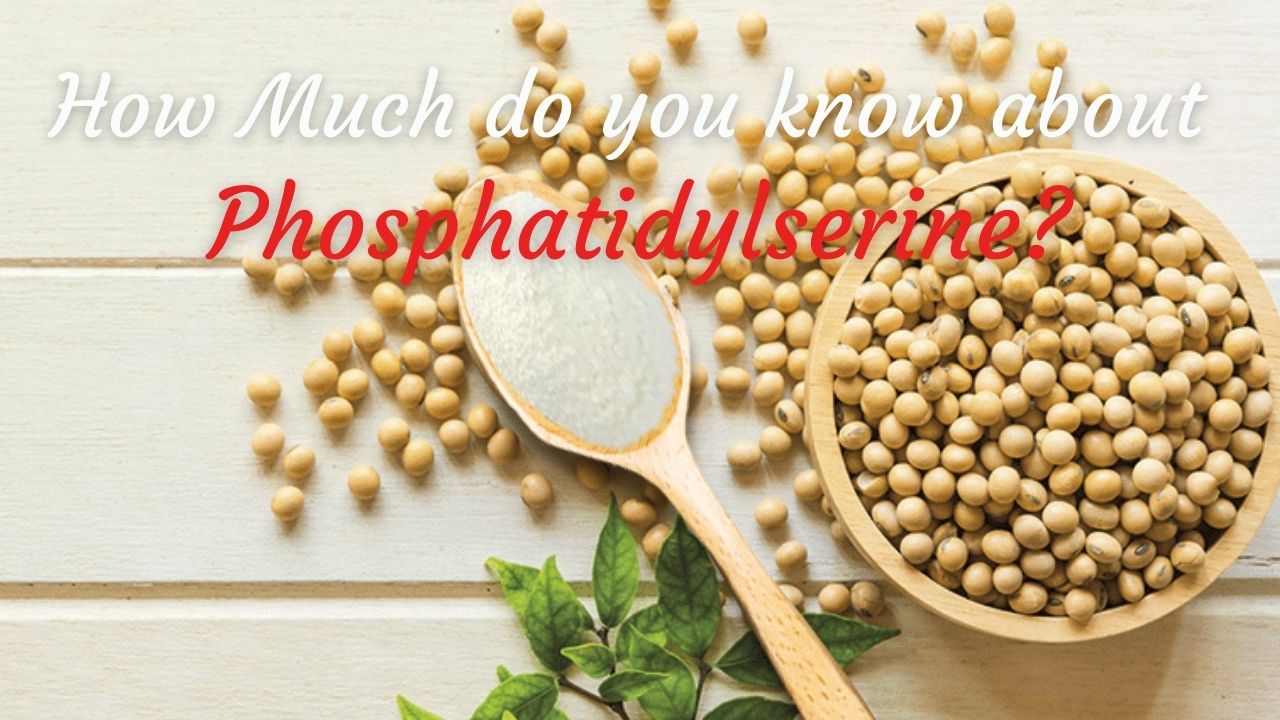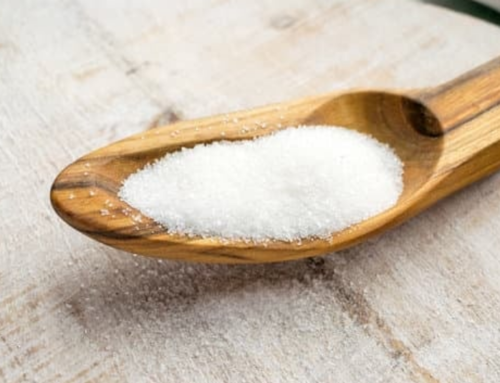Phosphatidylserine(PS), also known as compound nervonic acid. Extracted from the residue of natural soybean oil extraction. It is the active substance of cell membrane, especially in brain cells. Its function is mainly to improve the function of nerve cells, regulate the conduction of nerve impulses, and enhance the memory function of the brain. Because of its strong lipophilicity, it can quickly enter the brain through the blood-brain barrier after absorption, so as to relieve vascular smooth muscle.
The intake of Phosphatidylserine is about 180 mg/day; if the fat content of the food is low, the daily intake of phosphatidylserine will only be 100 mg, or even less than 50 mg. According to statistics, the difference between the daily intake of phosphatidylserine and the normal requirement of normal people is between 70-150 mg, and vegetarians are particularly lacking, with the gap reaching 200-250 mg. In view of the above reasons, normal people need to supplement 100-300 mg of pure phosphatidylserine per day. This is even more important for vegetarians, low-fat or low-cholesterol diets and the elderly. In addition, other dietary habits can also reduce the content of phosphatidylserine in the brain. For example, the lack of omega 3 fatty acids in the diet can reduce the content of phosphatidylserine in the brain by 28%, which in turn changes the biochemical function of the brain’s hippocampus.
The product is white or light yellow loose powder, which can be emulsified in water. Insoluble in ethanol and methanol; soluble in chloroform, ether, petroleum ether. The artificial compound is only soluble in chloroform. Extract from bovine brain at room temperature and exposed to the air, the daily denaturation is about 0.5%. Natural products (L-α-phosphatidyl-L-serine) are mostly extracted from bovine (sheep) brain or soybeans. Due to the difference between R1 and R2, it is actually a mixture of many compounds. For example, the approximate composition of R1 and R2 of cow brain products: 16:0, about 1%; 1.8:0, 40% to 41%; 18:1, 28% to 30%; 18:3, about 4%; 18: 4. About 1%; 20:4, about 1%; 20:5, about 2%; 22:6, 9% to 14%. Artificially synthesized products have many isomers, and the purification process is complicated. Such as the synthetic product 1,2-Di, hexadecanoyl-rac-glycero-3-phosphate-L-serine, C38H74NO10P, molecular weight 336.0.
It was first extracted and characterized by Jordi Folch in 1942. Phosphatidylserine consists of three parts: the hydrophilic glycerin skeleton is the head, and the two lipophilic groups of the longer hydrocarbon chain are the tails. The head consists of three groups: the serine residue is combined with the phosphate residue and then connected to the hydroxyl group of glycerol at position C-3; the other two hydroxyl groups of glycerol are respectively esterified with fatty acids to form the tail. Compared with the fatty acids at the C-1 position of glycerol, the fatty acids at the C-2 position generally have longer carbon chains and more unsaturated bonds. Phosphatidylserine (PS) refers to a group of compounds, not a single component, because the lipoacetyl residues of products extracted from different sources of raw materials vary greatly. PS is amphiphilic, that is, it is both hydrophilic and lipophilic. Its structure determines its unique properties. The negatively charged head is hydrophilic (or water-soluble), and the tail composed of fatty acids is lipophilic (or fat-soluble).
Phosphatidylserine (PS) can be synthesized by the human body using serine. It can affect the transmission of chemical information in the brain and help brain cells store and read data. It is an important nutrient element for maintaining normal brain memory, response, and healthy mood.
Phosphatidylserine (PS) is known as a new “smart nutrient” after choline and “brain gold” DHA. Experts believe that this natural substance can help the cell wall to maintain flexibility, and can enhance the efficiency of neurotransmitters that transmit brain signals, help the brain to operate efficiently, and stimulate the activation state of the brain. Specifically, phosphatidylserine has the following functions.
(1) Improve brain function, concentrate attention and improve memory.
In recent years, a large number of meta-analyses on phosphatidylserine have emerged in Europe and America (a meta-analysis refers to the systematic quantitative or qualitative synthesis of multiple independent research results on a certain issue). The main purpose is to update the results of previous research To reflect it objectively and comprehensively. Someone analyzed 9 double-blind, placebo-controlled clinical trials involving a total of 1224 patients. The results showed that the parameters of cognition and memory were significantly improved after supplementation with phosphatidylserine. There is no doubt that supplementation of phosphatidylserine can improve long-term memory, long-term cognition, and the ability to speak freely and logically.
As we age, phosphatidylserine and other important brain chemicals will gradually decrease, which will lead to a decrease in memory and cognition. Supplementing phosphatidylserine can increase the number of brain spurs, the fluidity of brain cell membranes and promote glucose metabolism in brain cells, thereby making brain cells more active, promoting concentration, and improving alertness and memory. Italy, Scandinavia and other European countries have widely used phosphatidylserine supplements to treat dementia and memory loss caused by aging.
(2) Relieve stress, promote the recovery of brain fatigue, and balance emotions.
A number of studies have shown that phosphatidylserine can significantly reduce the level of excessive stress hormones in the body of work-stressed people, reduce stress, and relieve brain fatigue; phosphatidylserine can also act on the level of neurotransmitters in the brain that affect mood. Promote concentration, improve alertness and memory, and help relieve bad emotions (such as depression, depression, etc.).
(3) Help repair brain damage.
Phosphatidylserine is one of the main components of brain nerves. It can nourish and activate the activities of various enzymes in the brain, delay the process of neurotransmitter reduction, help repair and renew damaged brain cells and remove harmful substances. It can restore the memory of the elderly to the level of 14 years ago. Studies have shown that after 12 weeks of consuming phosphatidylserine, a 66-year-old has the memory of a 52-year-old.
In addition, phosphatidylserine and DHA can promote the absorption of each other and protect nerve 2A cells. Abundant phosphatidylserine can increase the fluidity of cell membranes and promote the development of intelligence. Phosphatidylserine and DHA together can protect the central nervous system and promote the intellectual development of the fetus.
Application of PS in food and beverage
Research now shows that the main reason why phosphatidylserine can enhance human intelligence is that it can quickly pass through the blood-brain barrier and enter the brain. In the brain, it relaxes the smooth muscle cells of brain capillaries and increases blood supply to the brain. Therefore, in recent years, many products for stroke have used PS as a raw material.
When the human body ingests products containing PS orally, the effective ingredients can smoothly pass through the blood-brain barrier and enter the liver and brain within a few minutes after being absorbed. Because PS can increase the number of brain spurs, improve the fluidity of brain cell membranes and promote brain cell glucose metabolism, thereby making brain cells more active, it has now been increasingly used in the fields of medicine, food and health care.
The application of PS in food and beverage mainly has the following aspects:
- Solid food: Generally speaking, PS added to solid food is more stable, such as fortified choline oatmeal;
- Beverage: As PS is an active substance, it is recommended to be added to functional drinks;
- Milk:The added PS can enter the fat droplets of milk, avoiding the hydrolysis reaction of PS, and has good stability;
- Yogurt:After pasteurization, the drinkable yogurt with fortified PS has no content loss during the entire validity period, which shows that PS has strong stability in yogurt;
- Milk powder: PS can be added to adult milk powder and elderly milk powder, and has strong stability;
- Health care products: PS can be added to health care products such as DHA for pregnant and lying-in women, and coordinate with DHA to protect the 2A nervous system
- Food and dietary supplements: beans and seafood all contain phosphatidylserine, which helps the brain function. At the same time, it can relieve depression and prevent Alzheimer’s disease. It has a good effect on students, white-collar workers, and the elderly.
If you are looking for a supplier of hosphatidylserine, please contact us for the latest quotation and free samples.






Leave A Comment